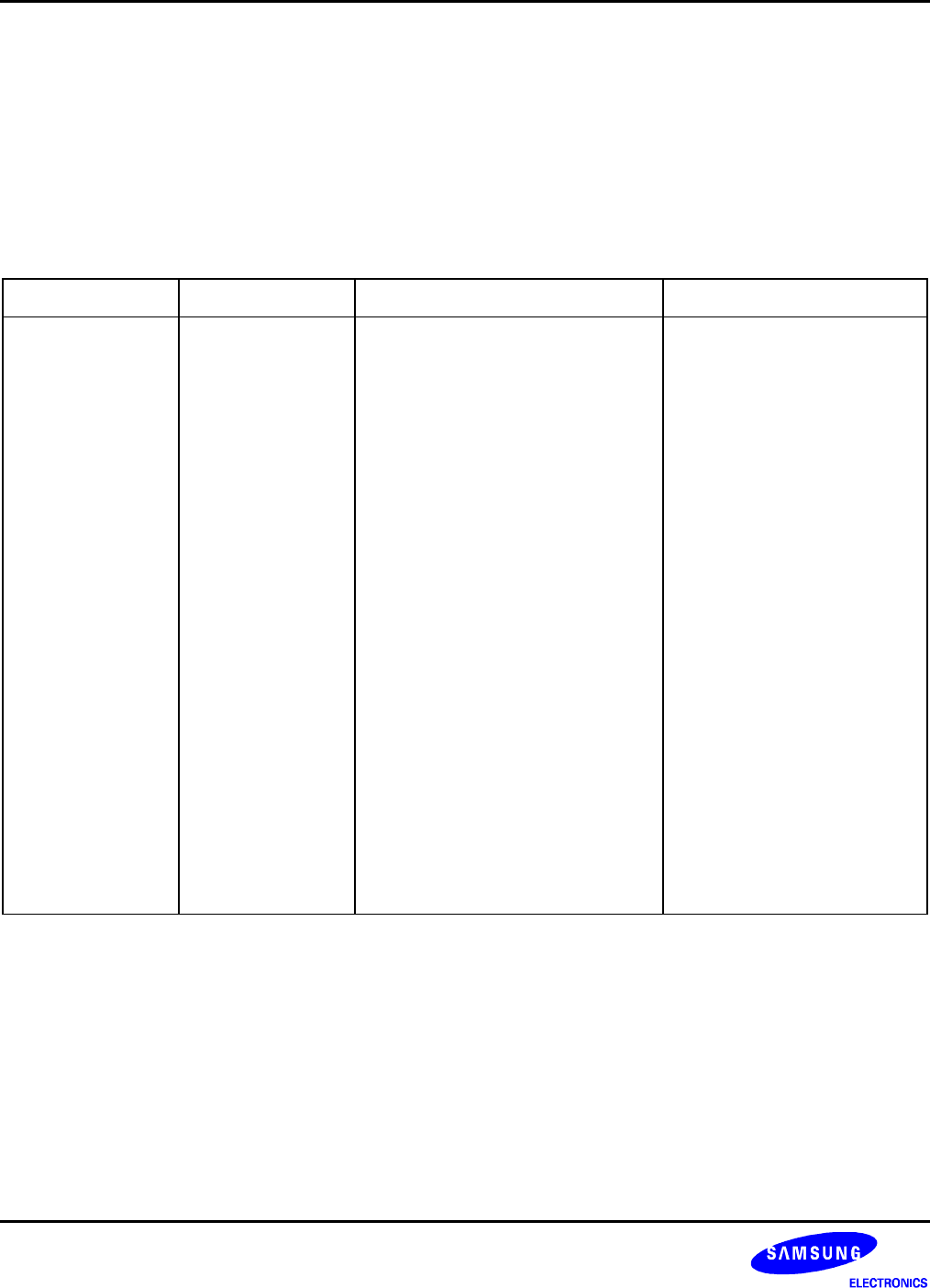
INSTRUCTION SET S3C8275X/F8275X/C8278X/F8278X/C8274X/F8274X
6-12
CONDITION CODES
The opcode of a conditional jump always contains a 4-bit field called the condition code (cc). This specifies under
which conditions it is to execute the jump. For example, a conditional jump with the condition code for "equal"
after a compare operation only jumps if the two operands are equal. Condition codes are listed in Table 6-6.
The carry (C), zero (Z), sign (S), and overflow (V) flags are used to control the operation of conditional jump
instructions.
Table 6-6. Condition Codes
Binary Mnemonic Description Flags Set
0000 F Always false
−
1000 T Always true
−
0111
(note)
C Carry C = 1
1111
(note)
NC No carry C = 0
0110
(note)
Z Zero Z = 1
1110
(note)
NZ Not zero Z = 0
1101 PL Plus S = 0
0101 MI Minus S = 1
0100 OV Overflow V = 1
1100 NOV No overflow V = 0
0110
(note)
EQ Equal Z = 1
1110
(note)
NE Not equal Z = 0
1001 GE Greater than or equal (S XOR V) = 0
0001 LT Less than (S XOR V) = 1
1010 GT Greater than (Z OR (S XOR V)) = 0
0010 LE Less than or equal (Z OR (S XOR V)) = 1
1111
(note)
UGE Unsigned greater than or equal C = 0
0111
(note)
ULT Unsigned less than C = 1
1011 UGT Unsigned greater than (C = 0 AND Z = 0) = 1
0011 ULE Unsigned less than or equal (C OR Z) = 1
NOTES:
1. It indicates condition codes that are related to two different mnemonics but which test the same flag. For
example, Z and EQ are both true if the zero flag (Z) is set, but after an ADD instruction, Z would probably be used;
after a CP instruction, however, EQ would probably be used.
2. For operations involving unsigned numbers, the special condition codes UGE, ULT, UGT, and ULE must be used.


















